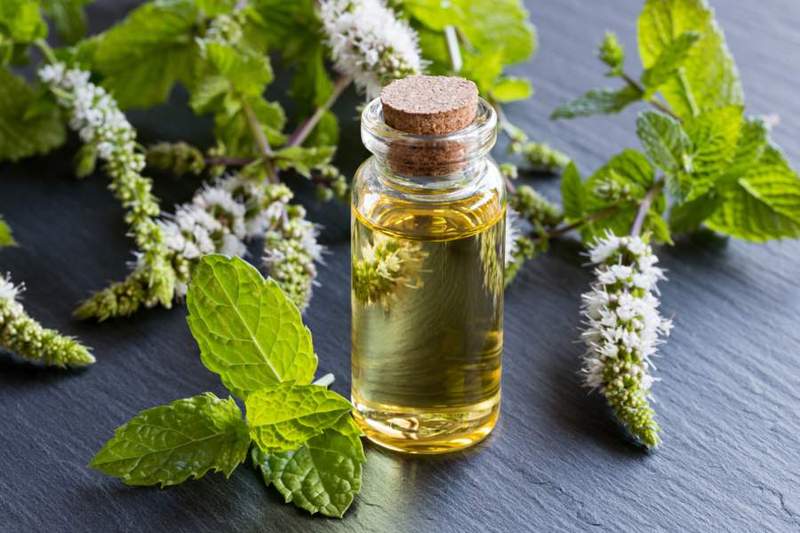
Five Natural Ingredients That Relieve Motion Sickness
If you’ve ever been hit with a sudden wave of nausea when travelling — you’ve probably experienced motion sickness. With symptoms ranging from mild queasiness to sweating, dizziness and vomiting, it’s an unpleasant sensation that can easily ruin a trip. While scientists are yet to fully understand the cause of motion sickness, there are things out there that can help. For instance, focusing your eyes on the horizon, breathing slowly and increasing flows of fresh air are just some tried and tested methods to relieve the symptoms.
However, for those of you who are looking to take extra measures, this article outlines 5 natural ingredients that have been recognised to reduce motion sickness. From peppermint to cannabinol, read on if you want to discover which natural supplements may be able to keep your nausea at bay.
Ginger

Widely known as one of the healthiest spices on the planet, ginger has been used to assist the health of humans since ancient times. Native to India, China and South-East Asia, the root ingredient has been shown to improve everything from heart health to the common cold. On that account, it’s no surprise that it may be able to alleviate motion sickness as well.
While the exact way ginger works in the body is still unknown, a number of studies indicate that the spice may, in fact, be a successful way to reduce nausea. For example, a trial by the National Library of Medicine (NIH) revealed that ginger could be used as a natural treatment for motion sickness, car sickness and seasickness. More generally, a 2012 study into cancer therapies found that extracts of the spice were extremely successful in reducing levels of nausea associated with chemotherapy. However, more research into the ingredient’s potential needs to take place because it can be considered a reliable way to treat motion sickness.
There are lots of methods to consume ginger to quell sickness, but the most popular include swallowing capsules of the extract, drinking ginger tea or eating the ingredient in candied form.
Liquorice
Commonly considered as one of the oldest herbal remedies, liquorice has a distinctive flavour and is commonly added to sweets, chewing gums and beverages. In addition to its unique flavour, the brown herb is another natural ingredient that has been widely praised for its anti-nausea qualities.
Liquorice boasts a variety of properties that benefit the digestive system, and this is the main reason that it’s understood to remedy motion sickness. For instance, a study into the extract’s benefits concluded that the ingredient was able to reduce symptoms of bloating, vomiting, stomach pain and nausea, after being taken consistently for two months. Moreover, other studies, like this 2019 research article, suggest that the herb is particularly useful in reducing nausea that is experienced during the earlier phases of pregnancy.
Liquorice can be consumed through a variety of methods, but the most common way to sample the herb is in herbal teas, tinctures, or powders. However, much like ginger, while the existing evidence looks promising, more research needs to take place before we fully understand the ingredients linked with travel sickness.
Peppermint
Peppermint is another natural remedy that’s been used for centuries to relieve nausea. Widely recognisable for its distinctive aroma and bright green leaves, the plant is a hybrid of the fellow herbs, water mint and spearmint. Peppermint boasts a wide range of vitamins and minerals that are advantageous to our overall health, but the main reason it’s understood to alleviate motion sickness is because of its supposed gut-friendly properties.
Peppermint is understood to maintain healthy gut health by calming down the stomach muscles in our digestive tract. By carrying out this function, bile is able to break down fats more successfully, and food can travel through with greater ease. This, in turn, is recognised to reduce symptoms of sickness. One 2018 study into its benefits even found that 84% of participants saw their nausea reduce after consistently using peppermint oil. The herb is such a promising antiemetic that peppermint aromatherapy is currently being offered in chemotherapy units in the US and the UK.
If you’re interested in trialling out the herbal remedy to fight motion sickness, peppermint tea is probably the most common way to intake it. However, if you’re after a car-friendly alternative, peppermint infused sweets, and chewing gum are also widely available.

Cannabidiol
Cannabidiol often abbreviated to CBD, is a cannabinoid that derives from the Cannabis Sativa plant. Unlike THC, the extract is completely non-psychoactive, and despite being a relative newcomer on the wellness scene, a number of studies are already pointing to its anti-nausea potential.
This animal study by the British Journal of Pharmacology, for instance, concluded that the compound might indeed have nausea relieving properties. Although much is still unknown about the way it works in our bodies, the research suggests that hemp extract may be able to alleviate nausea because of the unique way it interacts with our serotonin receptors, the hormone that influences our wellbeing. However, other studies indicate that the cannabinoid is much more effective when used alongside its herbal counterpart, THC.
If you want to use CBD to fight travel sickness, you have a variety of different options to choose from. Sublingual products like oils and sprays are the best choices for quick and effective relief, CBD capsules and capsules are discreet and provide pre-measured dosage, whereas CBD gummies are a fun and novel way to sample the extract.
Chamomile
Finally, the last natural antidote to motion sickness we will be taking a look at is chamomile. Typically sold in the form of tea, chamomile is an aromatic herb that derives from Europe. Acclaimed for its remedial and sleep-inducing qualities, the plant has also been used in traditional medicine to relieve nausea, vomiting and indigestion.
In recent years, the flower has gained more than anecdotal support for its antiemetic potential. For example, this 2016 study revealed that when the herb was used twice daily by women undergoing chemotherapy, it had a notable impact on the amount of nausea they were experiencing. Moreover, further research has shown that chamomile extracts may even be more effective at addressing nausea and vomiting caused by pregnancy than ginger. However, since none of this research focuses on motion sickness specifically, it is yet to be determined if the natural ingredient will be effective in reducing nausea associated with travelling.
You can buy chamomile tea from most grocery stores or supermarkets. Alternatively, if you want to make it fresh, you simply need to steep 1 tablespoon of dried chamomile in a cup of hot water before leaving it to brew for around 5-10 minutes.
There you have it! We hope this guide has exposed you to some useful natural alternatives for fighting travel sickness. However, since research into these remedies is still mounting, it’s important that you don’t use any of these supplements to replace any existing anti-nausea medication you may be taking.




